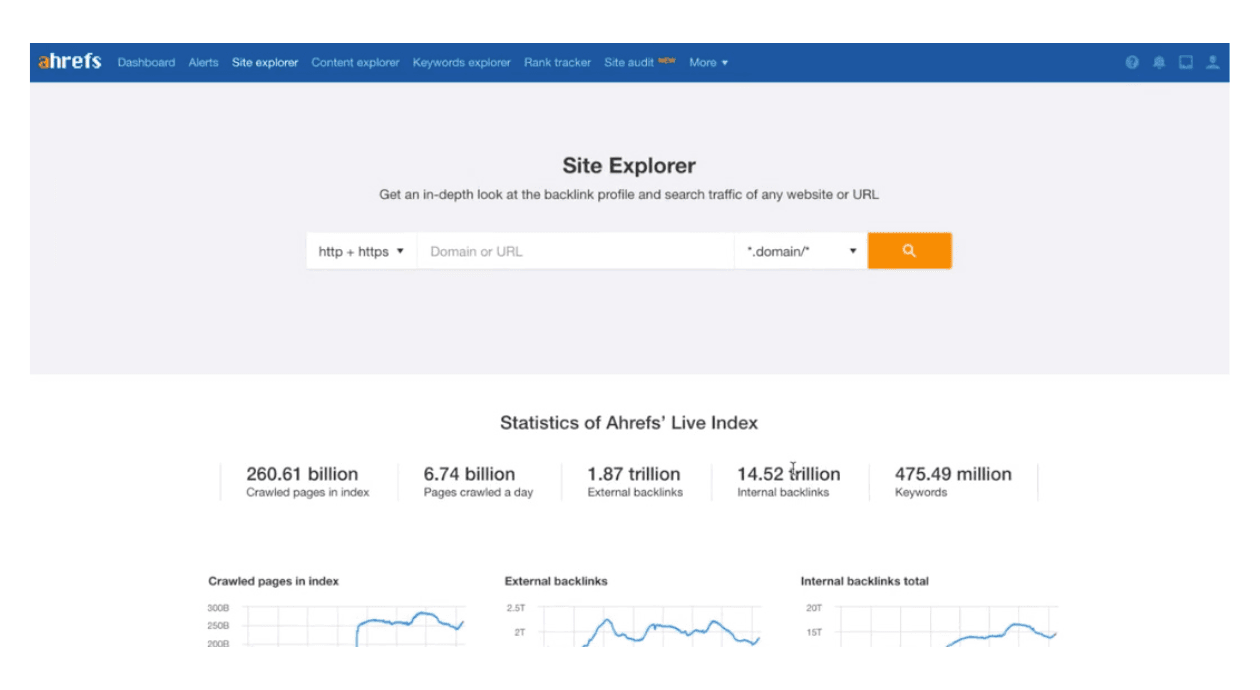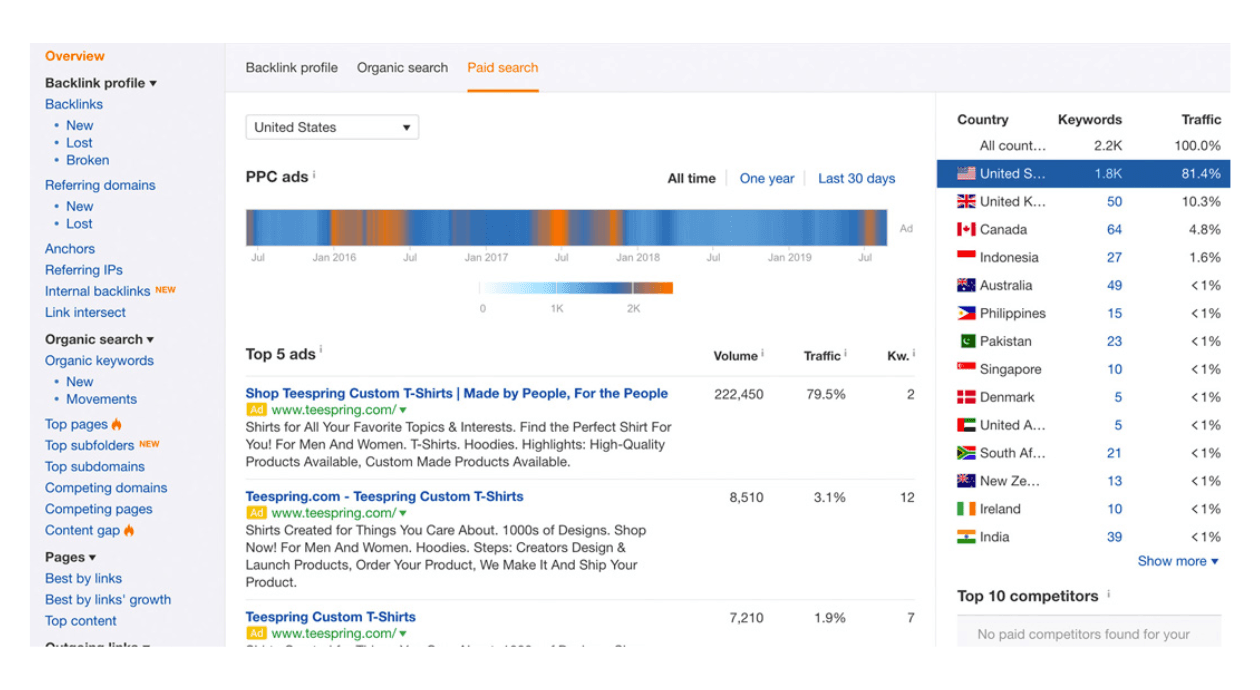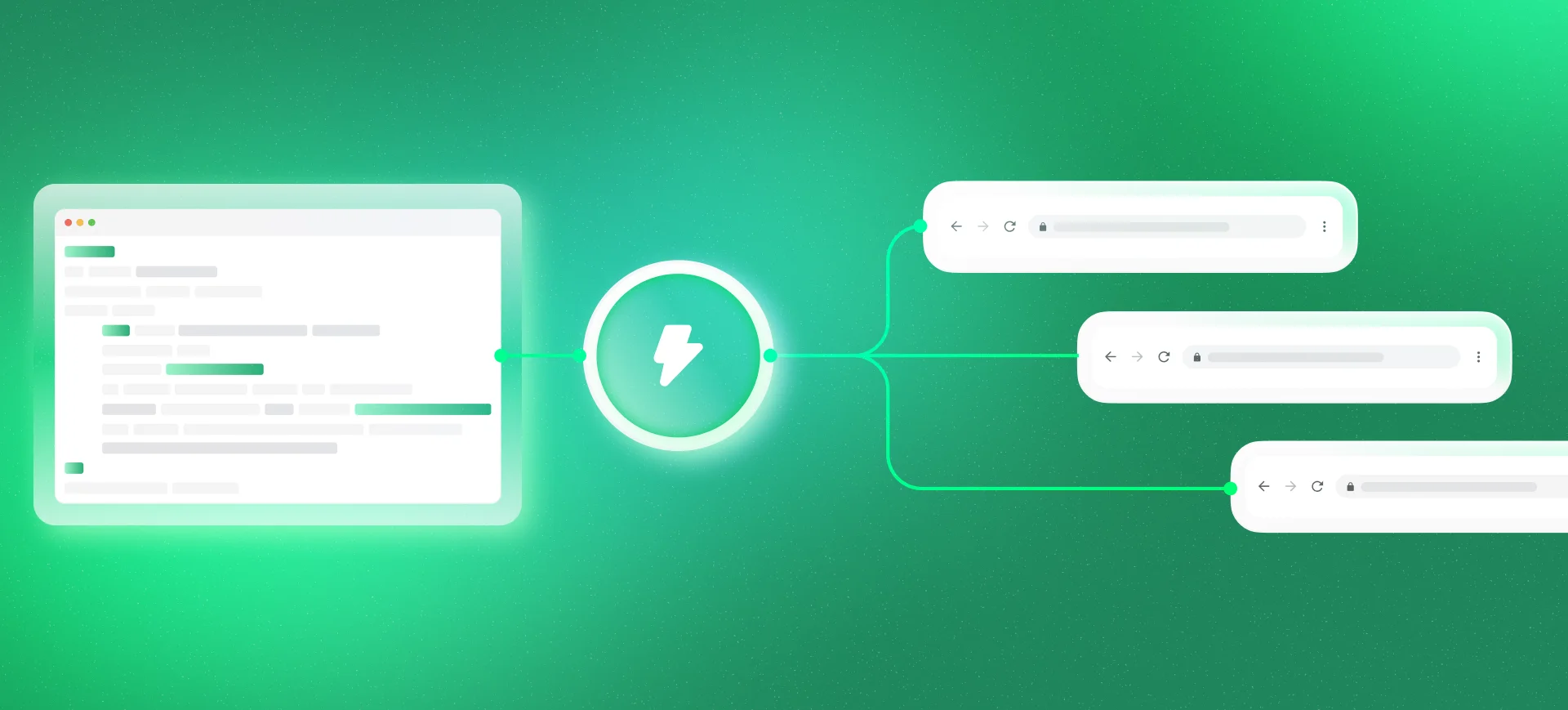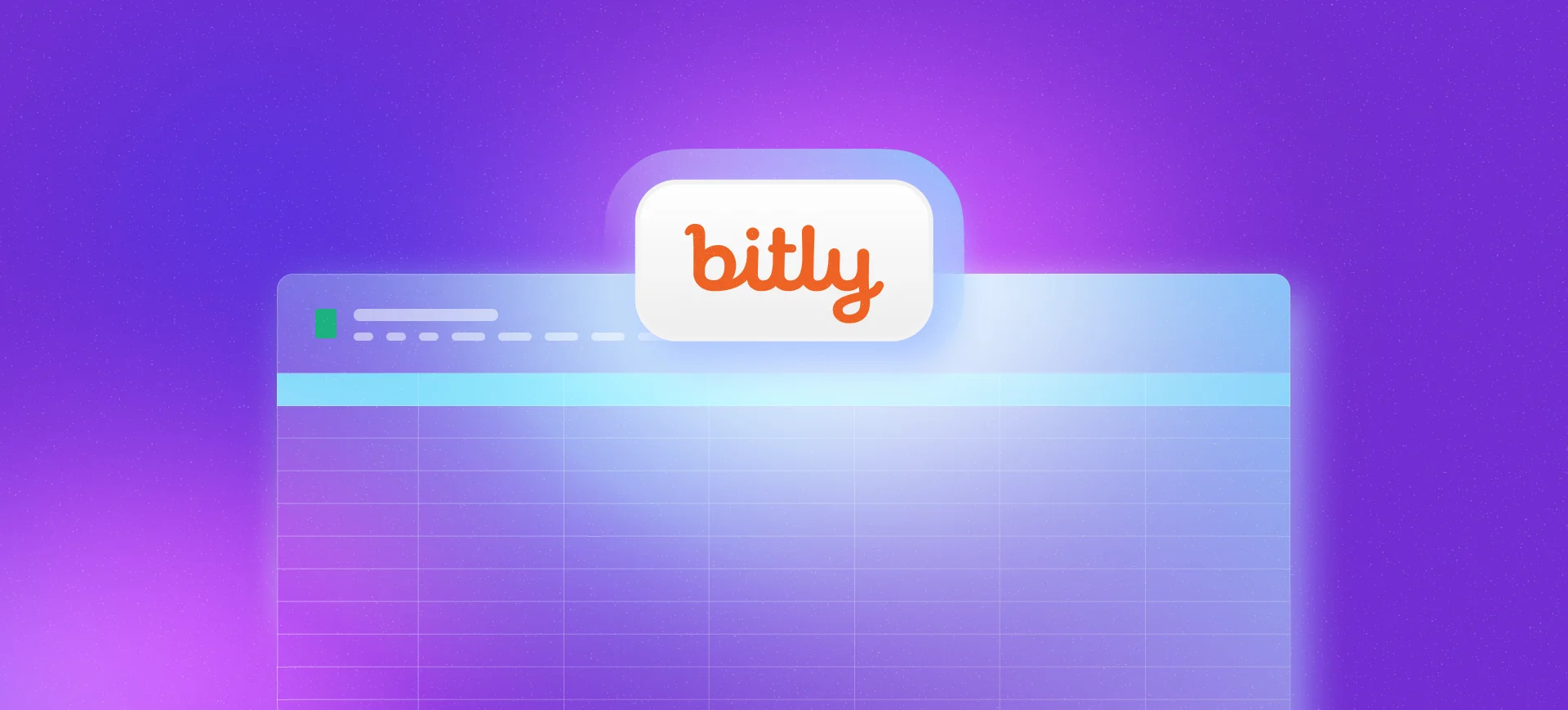By now, you probably already know that doing SEO is not easy at all and is a job that never ends, because it requires constant monitoring of the results of applied strategies.
However, with the right tools, this work doesn’t have to be so difficult. The focus in SEO is to optimize time in these analyses. That’s why it’s so important to have resources to help you.
That’s why SEO tools are so important and today, we’ll talk about one of them: Ahrefs, which is constantly updated to keep up with SEM and SEO trends, ensuring that its features meet market innovations.
In this article, you’ll understand what Ahrefs is, how it works, and what its features are. Continue reading to learn more.
What is Ahrefs?
Ahrefs is a set of tools, gathered in one platform, that has numerous resources to facilitate On and Off-Page SEO work. With it, you can analyze link building metrics, such as Page and Domain Authority, in addition to gathering important data for your SEO planning.
Initially, Ahrefs’ focus was only on backlinks. However, today it has expanded its range of resources and has become a complete tool for collecting, processing, and storing essential data for digital marketing processes. Ahrefs’ differential is that it alone can easily replace several tools, making it quite versatile. It is quite comprehensive and helps from suggesting ideas for link creation and content analysis, statistics and rankings, data export for analysis, tables and charts for visual representation and much more.
This is a paid tool that has different plans according to your needs, ranging from Lite, the simplest, to Agency, a more complete option. However, for those who want to know its features, you can do a 7-day trial, paying a proportional fee.
How Does it Work?
Ahrefs basically works as a platform that collects data from websites or blogs, processes, stores, and provides tools so that companies and professionals in the field can work with this information in their digital marketing strategies.
It has a kind of crawler that, just like search engines, accesses hundreds and thousands of web pages 24 hours a day to update its data, linking the most searched keywords in real time.
Additionally, it allows you to analyze the backlink profile, not only of your site but also of your competitors, helps you find the most profitable keywords for organic and paid searches.
It also identifies the most shared content on the web in social media, provides traffic estimates, points out SEO problems on your page, and even sends alerts to notify you about relevant information.
Main Features
It’s not enough to just mention all its benefits. For users to understand its relevance for SEO work, it’s important to know all the resources provided by Ahrefs. So, check out what they are below:
Site Explorer

Ahrefs’ Site Explorer manages to unite three important SEO factors on the same page:
Organic Traffic Research
It enables access to the keywords your competitors are ranking for, in addition to the pages that generate the most traffic in search engines.
To do this, just enter your page address in the “Site explorer”, or another one you want to check, and navigate to the “Organic search” section of the reports.
Backlink Verification
It helps identify which sites have links to your competitors’ pages and allows you to evaluate the quality of their backlink profiles.
Ahrefs has the fastest backlink crawler in the industry, in addition to the world’s largest backlink index, which makes it the best tool for external link research. To do the verification, just enter your URL in the “Site Explorer” and navigate to the “Backlink profile” section.
Paid Traffic Research

Site Explorer can detect if your competitors are doing paid search advertising and how their paid traffic behaves.
To access this information, go to the “Paid search” section of the reports to get all the important details. Additionally, with this resource you can track metrics such as:
- The quantity and quality of links pointing to a domain (Ahrefs Rank);
- Page Authority (PA), measured on a scale from 0 to 100 and shows the strength of the analyzed page;
- Domain Rating (DR), which is also measured from 0 to 100 and corresponds to the strength of backlinks pointing to the domain;
- Backlinks, identifying the number of external links;
- The total number of unique domains pointing to the page being analyzed;
- Keyword Difficulty, which is the difficulty of positioning a domain for a keyword on the first page of search results;
- Organic keywords, which are the organic keywords for which a domain is ranking;
- The organic traffic generated for it.
Alerts
This feature is quite similar to Google Alerts, but more focused on links and keywords. In general, alerts will be sent by email with important notifications for your domain or competition, which is quite nice to help you keep everything under control.
The information can be keyword positions that were gained and lost, new links or lost links. For this, you can configure alerts according to what you want to be notified about.
It’s quite simple to configure alerts, check below:
- In the horizontal menu tab, click on “More” (last item) and select “Alerts”. Then, click on “Mentions”;
- Then, click on “+ Add alert”;
- Right after, a pop-up will appear that you should fill out as follows:
- In the “Search query” field, enter the keyword for which you want to receive mentions;
- In “Mode”, select whether you want Alerts to find these keywords in the title or content of the post, or both;
- In “Language”, select the desired language.
- In “Blocked domains”, select the domains you don’t want to be alerted about, if any;
- In “Intervals”, set the frequency of alerts, which can be daily (one report per day) or weekly (one report per week);
- Then, finalize your Alert by clicking “Add”.
Content Explorer
The idea of Content Explorer is to identify which are the most relevant content being accessed at the moment and that are generating the most engagement on the web. This helps you plan content topics for your site, in addition to providing you with various insights. You can use language and current period filters to identify the most current and relevant content in your language.
Content Explorer is perfect for those who want to do more advanced research. With the right combinations of filters, it’s possible to identify potential link building clients, topics with little competition, partnership opportunities, etc.
Check out what filters the tool provides to find content that matches your criteria:
- Published once / Published more than once;
- Referring domains;
- Publication date (of first publication and update, when applicable);
- Organic traffic;
- Live / Broken;
- Word count;
- Language;
- Traffic value;
- Social shares;
- Geographic location;
- Domain Rating;
- Author.
The charts also allow you to check backlink and organic traffic gains and losses over time. To access all this, you can click on “Details” and see the behind-the-scenes of any page and better understand how it works.
Additionally, Content Explorer also fixes broken link building, identifies inactive pages and builds links to recreate them. Another quite useful feature is checking how often your competitors are publishing, updating and republishing content.
You can also find mentions of your site that are not linked. To do this, just search for your brand name. With this, you can access these sites and ask them to insert a link and make the mention clickable.
Keywords Explorer
Keywords Explorer is a quite complete tool for keyword research. It includes various resources such as search result metrics not only from Google, but also from other search engines like Bing, YouTube, Amazon, etc.
Another feature of Keywords Explorer is keyword idea generation. The keyword explorer takes the 10 most popular keywords on the web and generates hundreds of ideas considering the following points:
**Phrase match:** it analyzes phrases that contain the target keyword;
- Having same terms: ideas that contain the same terms as your target keyword (regardless of order);
- Search suggestions: suggestions that appear through “autocomplete” when a keyword search is performed;
- Recently discovered: search queries recently added to Ahrefs’ database;
- Questions: questions formulated with the keyword terms.
Additionally, Keywords Explorer helps define the difficulty of ranking a keyword in the top 10 search results. For this, it calculates a keyword difficulty score that goes from 1 to 100, with 100 being the most difficult. It also shows:
- Clicks: the average number of monthly clicks on search results for a given keyword;
- Clicks per search: shows an average of how many different search results users click on after searching for that keyword.
- Click %: indicates the percentage of searches for a target keyword that measures clicks on search results;
- % paid clicks vs organic clicks: measures the distribution of clicks on paid and organic content in search results.
Rank Tracker
Rank Tracker is another tool for tracking keyword position. It brings together various features in a single tool. With it, you can analyze any keywords and track their rankings on any desktop or mobile device.
Setting it up is quite simple — just enter a keyword, or import a list, add countries per keyword and indicate competitor website URLs. Then, Ahrefs will start monitoring the data and regularly send updates.
Additionally, Rank Tracker constantly sends email reports with details of the most relevant changes in your keyword rankings and performance. You can also get data for the following features:
- Featured snippet;
- Sitelinks;
- Top stories;
- Image pack;
- Thumbnails;
- Adwords top;
- Adwords bottom;
- Shopping results;
- Knowledge card;
- Knowledge panel;
- Videos;
- Tweet box;
- “People also ask…” box.
Site Audit
Site Audit aims to perform a technical audit on the site in order to find errors that are harming indexing, for which it provides recommendations on how to fix them. This audit can be scheduled to be done daily, weekly or monthly and all information can be viewed through detailed charts.
The analyzed errors can be related to:
- Performance (slow pages, CSS or HTML too large);
- Domain health (Health Score);
- HTML tags;
- Social tags;
- Content quality;
- Localization;
- Incoming links (orphan pages, nofollow link problems, etc.);
- Outgoing links (redirect links, broken pages, etc.);
- Resources (problems with images, JavaScript, CSS, external pages, etc.).
Additionally, Ahrefs’ site audit is cloud-based, which means it doesn’t need installation, you can access it from wherever you are, at any time, there are no processing costs for you, crawl saving is done automatically, as well as software updates.
Depending on your Ahrefs plan, you can still process JavaScript-generated content on any page of the site. With this, you can perform accurate analysis on pages and links that depend on JavaScript.
With so many benefits, we can consider Ahrefs an excellent tool for those who want to work with SEO. It facilitates and optimizes the data collection process for analysis.
You don’t necessarily need to be an expert to use a tool like this, but of course you’ll need to have some prior knowledge. If you have an agency or company, Ahrefs can be very useful for you and can be easily used by an SEO specialist.
If you have any questions regarding the tool, you can access the Ahrefs Help Center, leave your comment below or contact us to learn more about how this and other tools can help your business!




